Introduction
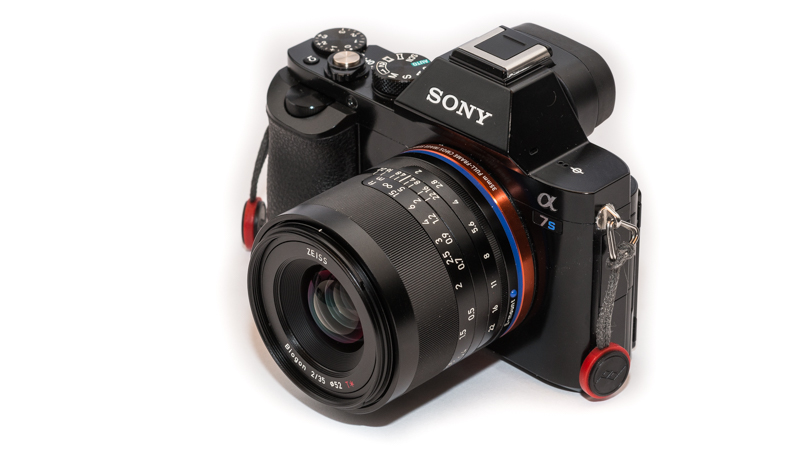
The Zeiss Loxia 35mm 2.0 Biogon is one of Zeiss’ manual focus lenses specifially designed for E-mount cameras. The modern design, the aperture “de-click” feature and the transfer of Exif-data sets it apart from adapted lenses. Read on to learn how it fares optically.
Update: conlusion updated (06/05/2016)
Sample Images
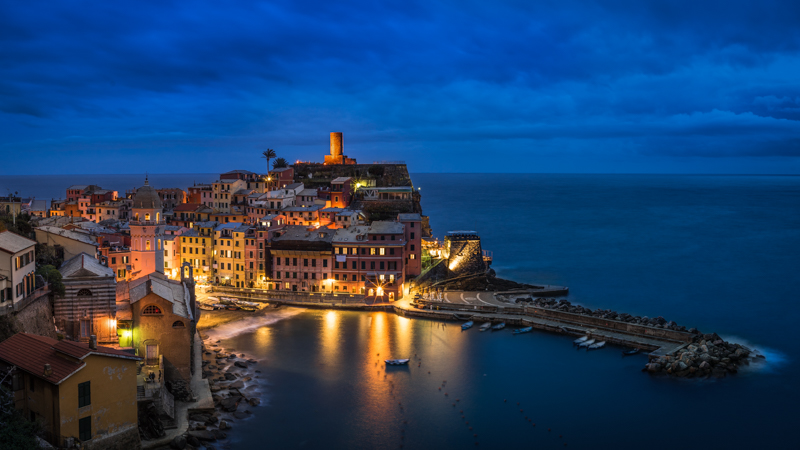
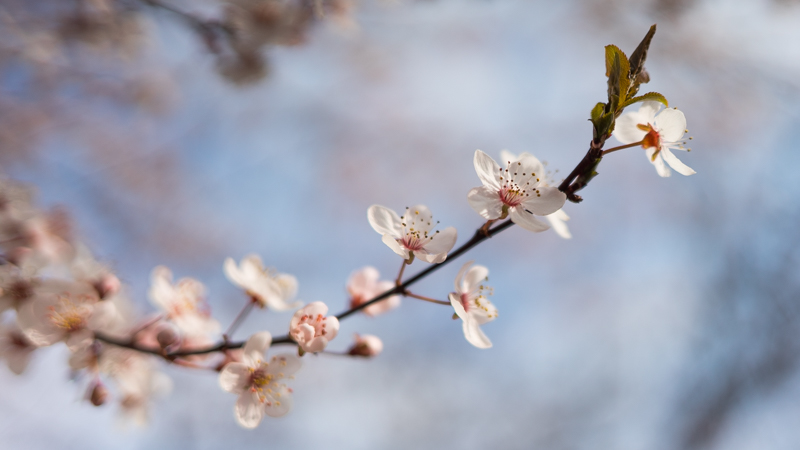
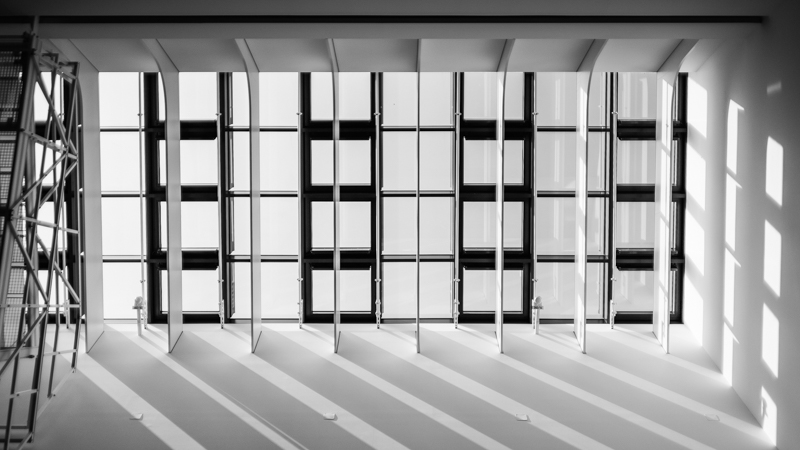
This lens was also featured in my fast 35mm manual focus lenses comparison you might want to have a look at.
Specifications
The Zeiss Loxia 35mm 2.0 has the following specifications:
-
- Diameter: 62.1 mm
- Field of view: 63° (diagonally)
- Length: 66.0 mm (with caps)
- Weight: 340g
- Filter Diameter: 52 mm
- Number of Aperture Blades: 10 (straight)
- Elements/Groups: 9/6
- Close Focusing Distance: 0.3 m
- Maximum Magnification: 1:5.8
- Mount: Sony E
You may also have a look at the official page.
The ZM version has a similar design but has not been optimized for the thick filterstack of the A7 series cameras (see this article). You can take a look at the specifications here on the offical page as well.
The Loxia 35mm 2.0 can be bought for $1300/1150€ at Amazon.com/Amazon.de/B&H/ebay.com (affiliate links), the Zeiss ZM 35mm 2.0 Biogon is a tad cheaper at $1100/1050€ at Amazon.com
/Amazon.de
(affiliate links)
Disclosure
The Zeiss Loxia 35mm 2.0, alongside the ZM version with Leica-M mount, was kindly provided free of charge by Zeiss Germany for reviewing purpose for a duration of 4 weeks.
Handling / Build Quality
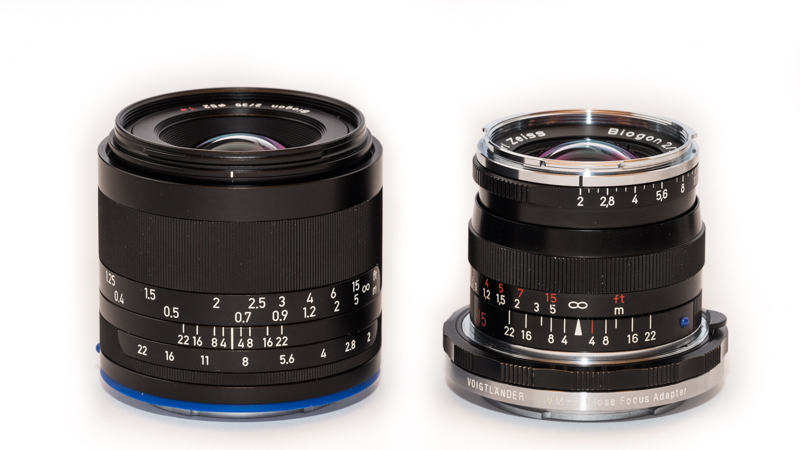
The build quality of the Loxia is very nice and the most part of the lens is made of metal. There is also a blue rubber gasket at the rear of the lens, albeit there is no E-mount camera body with true weather/dust resistance available to date.
The focus ring has just the right resistance and it takes ~180° from infinity to 0.3 m. The aperture ring has third-of-a-stop click-stops and turns about 120° which is a little more than I prefer as it takes quite some time to go from f/2.0 to f/11. One can also “de-click” the aperture ring to make it stepless which I think is mostly interesting for filming purposes.
There are almost no non moving parts to grab to mount or unmount the lens, if this is something that may bother you have a look at the Loxia Lens-Grip from PocketPano.
The included hood is mostly made of metal, but sits not very tight. This may be a problem of this very sample, as I can’t assess by how many people this review unit has already been used.
There is also another feature: when turning the focus ring the camera automatically zooms in but to be honest I found this behaviour to be slowing down my shooting (as I prefer to move the box first and then zoom in), so I turned it off in the camera menu.
In the picture above I included the Zeiss ZM T*35 mm 2.0 Biogon and one can already see how similar the dimensions are and how similar the front lens element looks. Turning the focusing ring from infinity to 0.7 m or the aperture ring from f/2.0 to f/22 both takes about 120° with this M-mount lens.
Vignetting and colorcast
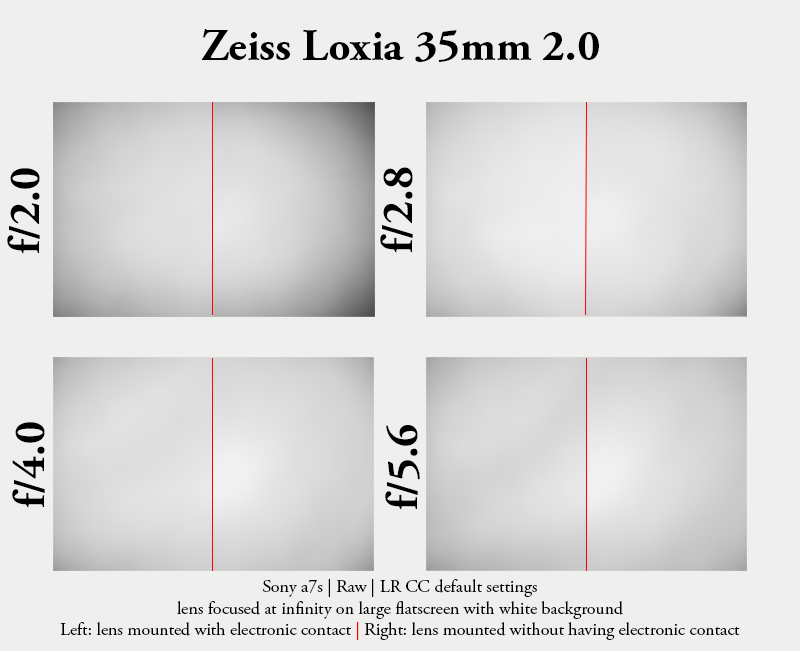
Some of the vignetting is being already corrected within the RAW-files, take a look at our Loxia 21mm 2.8 review, to read more about this. Still, vignetting is better corrected with the Loxia in comparison to the ZM version and about average for a lens with these parameters. I didn’t notice any traces of color cast on the edges.
Sharpness
infinity

The sharpness in the center is pretty decent even at f/2.0. The midframe reaches very good resolution at f/4.0 and the corners at f/11. For landscapes and architecture I recommend shooting at f/11. For a modern lens with such a high price tag this is not a very good performance. I included a second shot taken at f/2.0 but this time focused on the corners, to show you the impact of the field curvature: the corner is a little sharper but the center is out of focus now. I would also like to remind you I am testing with a 12mp A7s here, so the corners may look worse on the 36 or 42mp sensor at 100% magnification.
But I also want to additionally show you a comparison between the Loxia and the ZM version, as the corner performance on the A7 series cameras has indeed been greatly improved here:
comparison 100% crop of corner (A7s, focus on center): Loxia 35mm 2.0@2.0 (before) vs Biogon ZM 35mm 2.0@2.0 (after)
close focus
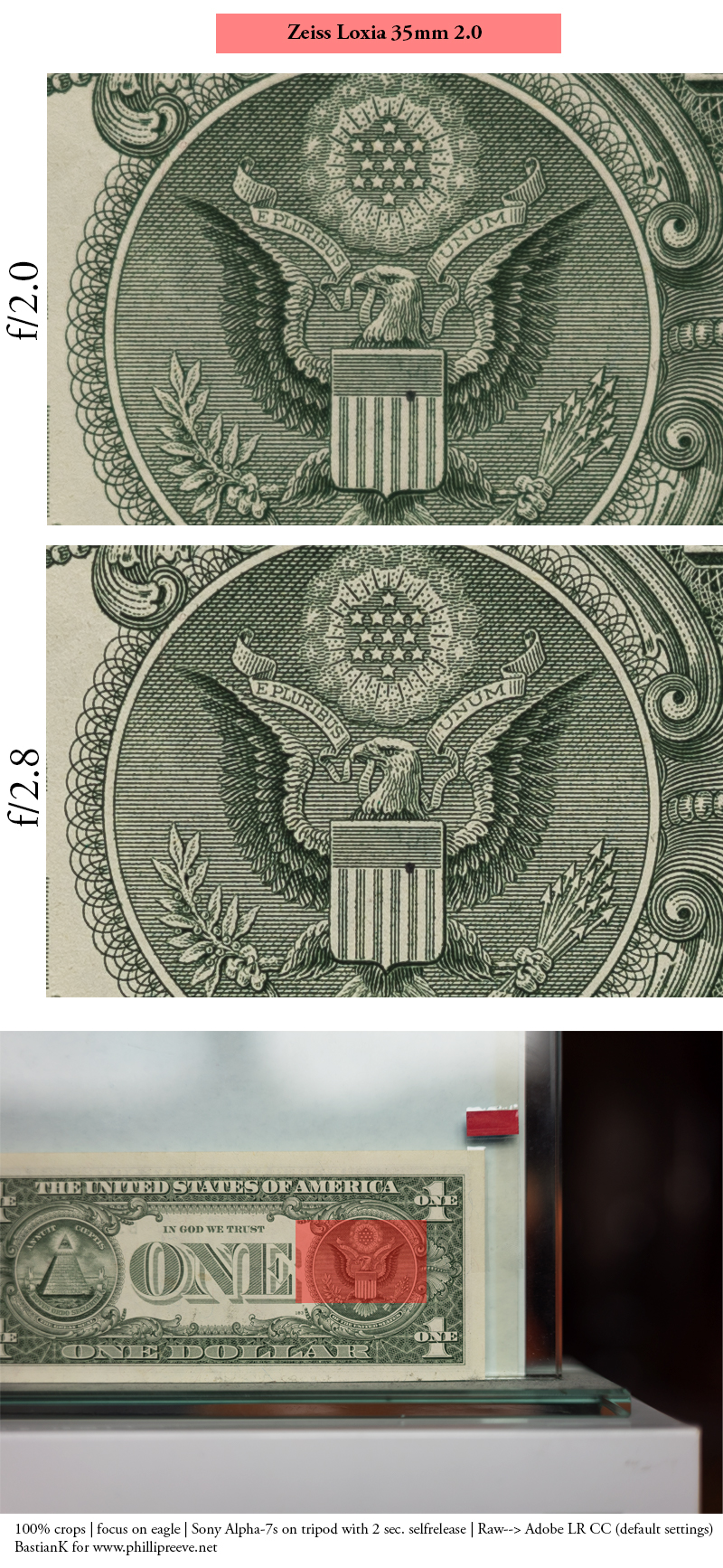
At the close focus distance and the widest aperture the image is a tad soft (which is the case with many lenses without a floating elements design), from f/2.8 onwards sharpness is excellent.
Flare resistance
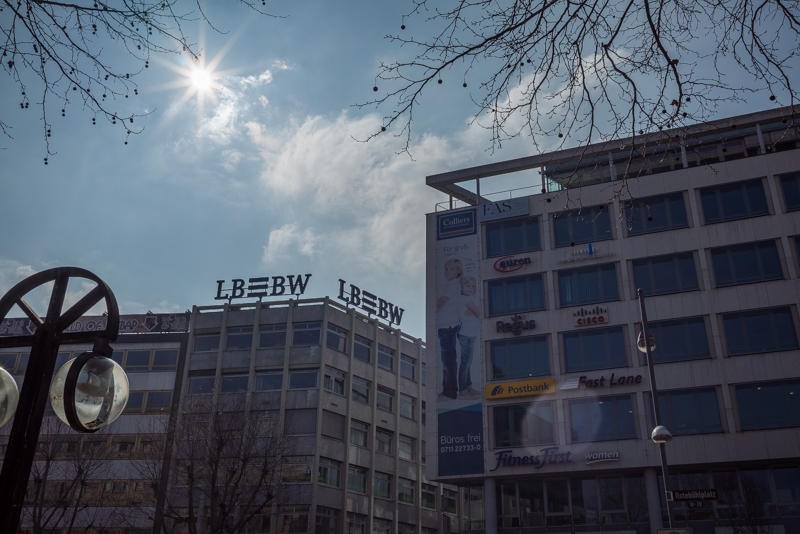
With the sun directly in the frame the photo above is the worst I could produce. Apart from the lens flare there is also some loss of contrast. With the sun outside the frame the hood certainly does a good job, as the following comparison shows:
comparison: no hood (before) vs hood (after)
This is a pretty average performance, better than many older lenses, worse than some of the newer ones.
Coma
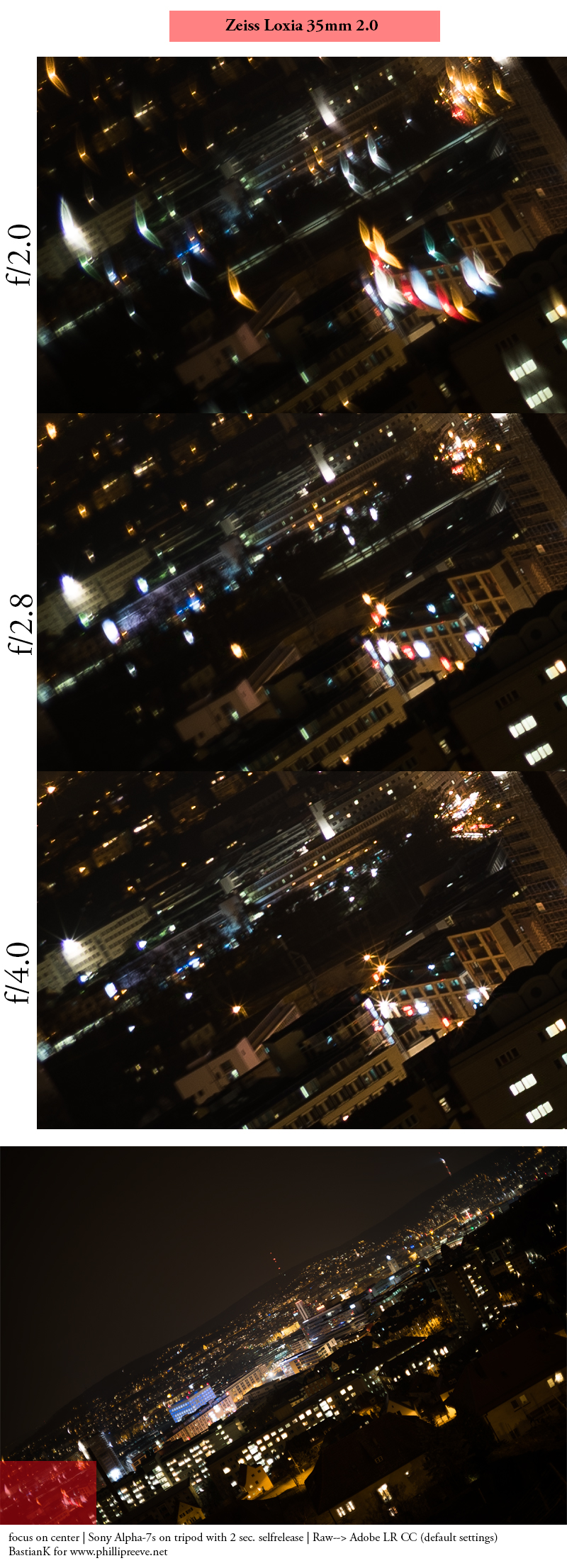
The coma correction is pretty bad until stopping down to f/4.0 so I would not recommend using this lens for landscape astrophotography or for nightly cityscapes below f/4.0.
Distortion
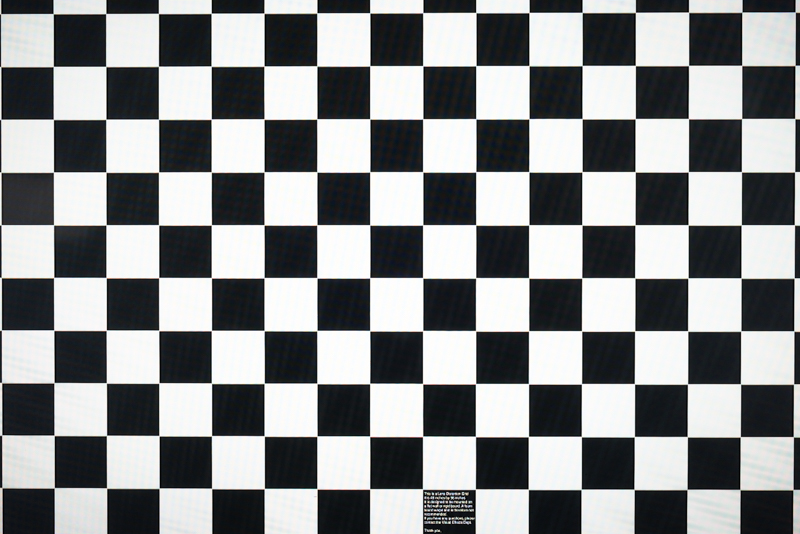
Distortion is actually a non issue with this lens. It also does not seem to be corrected in RAW files, as it simply isn’t necessary.
Bokeh
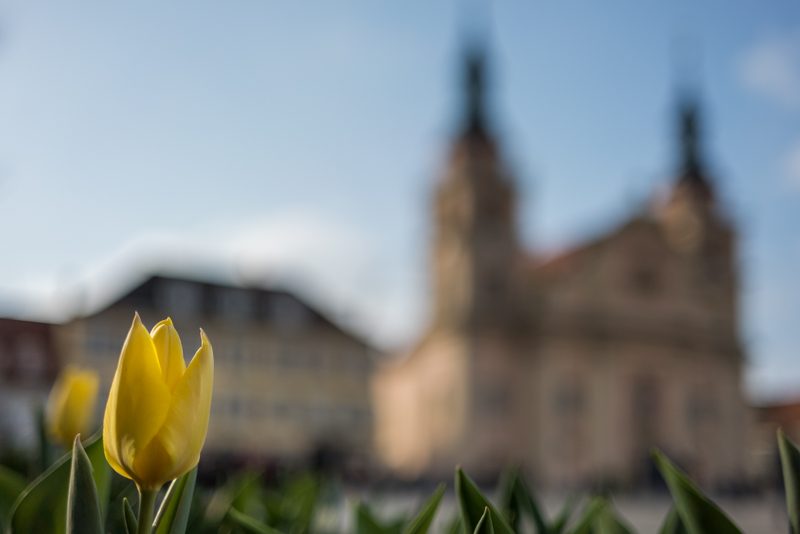
The quality of the bokeh is a mixed bag for me. At close distances (see photo above) the quality is quite good and the cat’s eye effect is not too pronounced either, but going further away from the subject, outlinings start to appear and depending on the background it may also look quite busy (see example below).
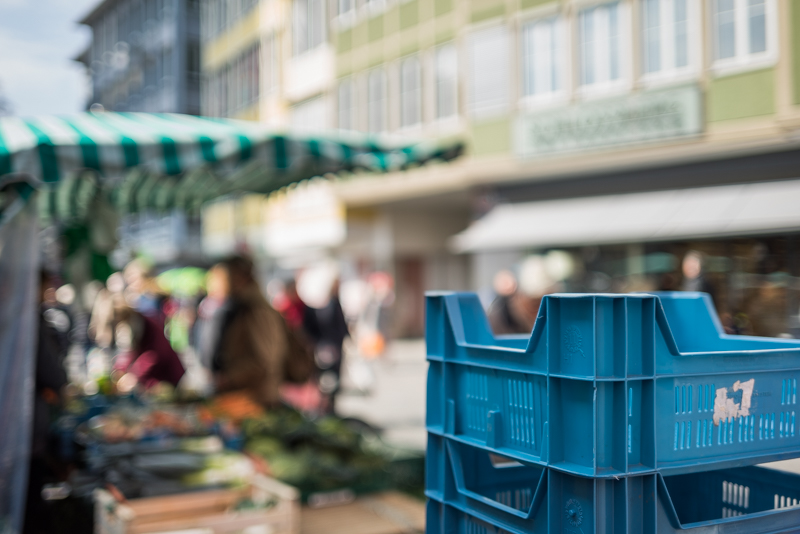
The outlining is much less pronounced at f/2.8 but keep in mind, because of the straight aperture blades, when stopping down, points of light become 10-sided figures.
Bokeh, f2.0 (before) vs f2.8 (after)
Sunstars
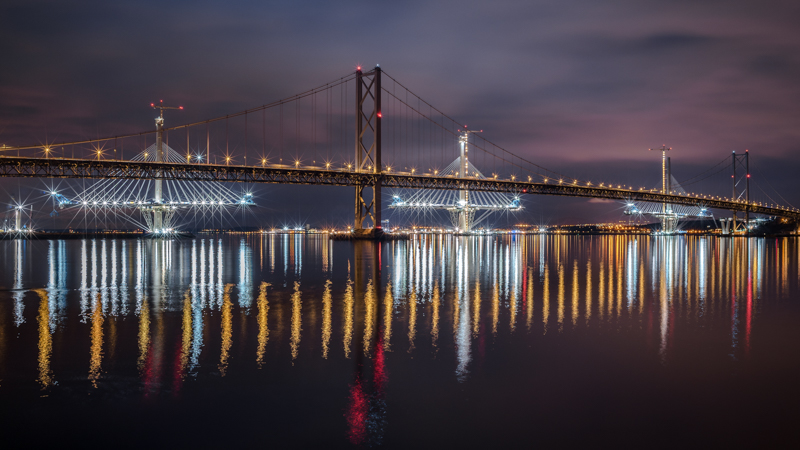
In case you read any of my other reviews you already know I do like 10-pointed sunstars as produced by the 28mm 2.0 Ultron and the 50mm 1.5 Nokton. Luckily all of the Loxias to date also produce these and therefore it was a joy to use this lens for city and nightscapes stopped down.
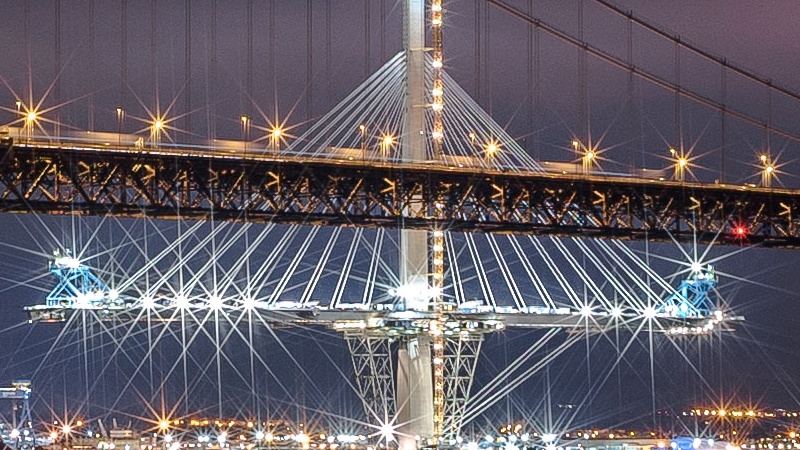
Chromatic aberrations
longitudinal
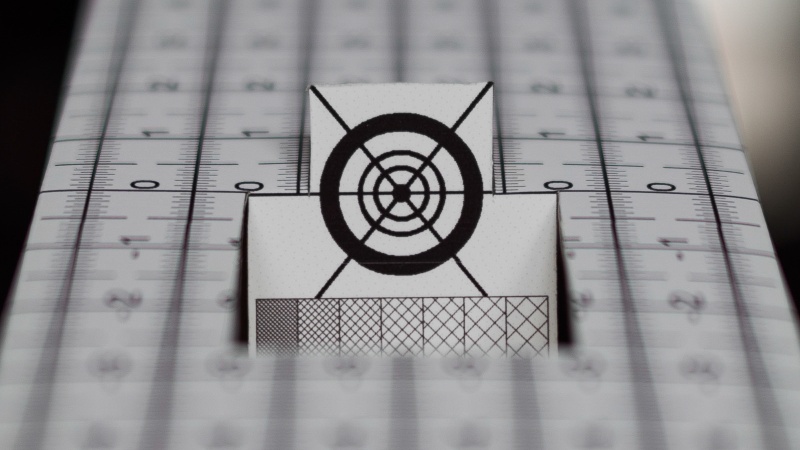
Depending on the distance between you and your subject the bokeh may show traces of green outlining, apart from that the correction of longitudinal CA is pretty good, as can be seen in the 50% crop above.
lateral
I was really pushing the lens here, but even in the uncorrected image I can hardly spot any CA (this applies to the whole aperture range). This is simply excellent performance here.
Sony A7s | Zeiss Loxia 35 mm 2.0 | f/11 | CA 100% crop before/after extreme corner
Alternatives
Voigtlander Ultron 1.7/35 – I think this is the strongest competitor. It shares the great sunstars and build quality. The bokeh wide open of the Voigtländer has less outlining but much more pronounced cat’s eyes. Because of the thick filter stack the Voigtländer has more problems with field curvature but I would stop down both lenses to f/8.0 to f/11 for even sharpness across frame anyway. What you are giving up with the Voigtländer is the option to declick the aperture ring (interesting for filming) and the transfer of Exif data which the Loxia offers, but you also gain a faster maximum aperture and it only costs roughly 2/3rds of the Loxia. .
Sony Zeiss Sonnar 2.8/35 ZA T* FE – Although it may look similar at first sight, this is a completely different lens. It is a little smaller, has autofocus (and a fly-by-wire focusing ring), only 7 aperture blades, distortion is a little higher and because of the incorporation of aspherical elements the bokeh can show onion rings. This lens is not for me, but in case you rely on autofocus this is your cheapest 35 mm option for the A7 cameras right now (albeit I think it is pretty expensive for what it offers).
Sony Zeiss Distagon 1.4/35 ZA T* FE – I haven’t laid my hands on one of these yet and I’m not particulary keen on changing that, as I see no point in using these large and heavy lenses on A7 cameras, although I expect much better edge-to-edge sharpness at smaller apertures and better coma correction.
Older manual 35 mm lenses – There are simply too much options here to cover them all but you may start taking a look at our Canon FD 35 mm comparison in case you are looking for a cheaper option.
Conclusion
good
|
average
|
not good
|
When comparing the Loxia 35mm 2.0 Biogon E directly to the Zeiss ZM T* 35mm 2.0 Biogon there are many similarities: bokeh is pretty much the same as are contrast and sharpness in the center of the frame. The bokeh can be distracting at certain distances and is only smooth near the minimum focus distance and shows some minor outlining at f/2.0 towards the edges. But bokeh is also a very subjective thing, so take a look at the examples and decided for yourself.
The differences appear when taking a look at the corners of the frame: the ZM never gets really sharp in the corners, a problem it shares with many older Biogon designs on the a7 series (the Contax G 21mm and 28mm 2.8 come to mind here), whereas the Loxia has pretty even sharpness across the frame at f/11. Unfortunately the lenses do share some negative aspects as well: the coma is pretty bad until f/4.0 and albeit the consideration of the thick filter stack in the optical formula there is still some field curvature left and so until f/8.0 the extreme corners at infinity don’t look particularly good. The build quality on the other hand is top notch and rarely leaves something to be desired.
I really admire the boldness of Zeiss to release a line of manual focus lenses in a time where most people are merely talking about eye-autofocus, image stabilisation, fine tuning focus with USB docks and all the other bells and whistles found in some modern lenses. Keeping the same (small) filter diameter for the whole lineup is also something I really like. In case you read any of my other reviews on this blog you already know I don’t like fly by wire focus and I don’t care for mediocre corner performance at wider apertures in case a lens has nice bokeh at maximum aperture and is sharp across the whole frame at f/11 and produces nice sunstars which are all boxes that can be ticked here.
But there is one problem I see here: this is a native E-mount lens, it carries the Zeiss brand name and a very high price tag so I would have expected better corner performance at wider apertures and better coma correction. Especially because of the fact that the Zeiss Loxia 21mm 2.8 and the two Batis lenses are such great performers. Another problem is the strong competition, there are no less than three native 35mm E-mount prime lenses (which all carry a Zeiss tag by the way) you can buy today, alongside a huge number of manual lenses which can be adapted (see the Alternatives section).
Designing a lens always means to compromise and when taking a look at the heritage of this lens – which lies in the film era – you see that the emphasis has shifted from aspects such as low distortion and low lateral chromatic aberrations (which can nowadays easily be corrected in post) towards better corner sharpness and coma correction at wider apertures in completely new designs (I think of the 21 mm 2.8 Loxia or the Sony FE 28 mm 2.0 here for example).
So, who is this lens for? Anyone, who looks for a small yet native 35 mm E-mount lens with great build quality and transfer of Exif information or who is primarily filming and can therefore make use of the “de-click” function of the aperture ring. In case you are looking for great across the frame sharpness at wider apertures or you are planning on using a 35 mm for astro landscape photography this is probably not the right lens for you. I have to admit though, stopped down contrast and sharpness are great, as are the sunstars and this lens yielded me some very nice images within the rather short period of time I had the chance to use it, but personally I think it is overpriced for what if offers.
Update 06/05/16:
Despite some of the technical shortcomings I have bought this lens myself now. In retrospective the photos I have taken with this lens have something about them I really like, I think it is best described as a very punchy micro contrast. Take into account most of my photos are taken stopped down, this was indeed the best (small) 35mm lens for my needs.
The Loxia 35mm 2.0 can be bought for $1300/1150€ at Amazon.com/Amazon.de/B&H/ebay.com (affiliate links), the Zeiss ZM 35mm 2.0 Biogon is a tad cheaper at $1100/1050€ at Amazon.com
/Amazon.de
(affiliate links)
Sample Images
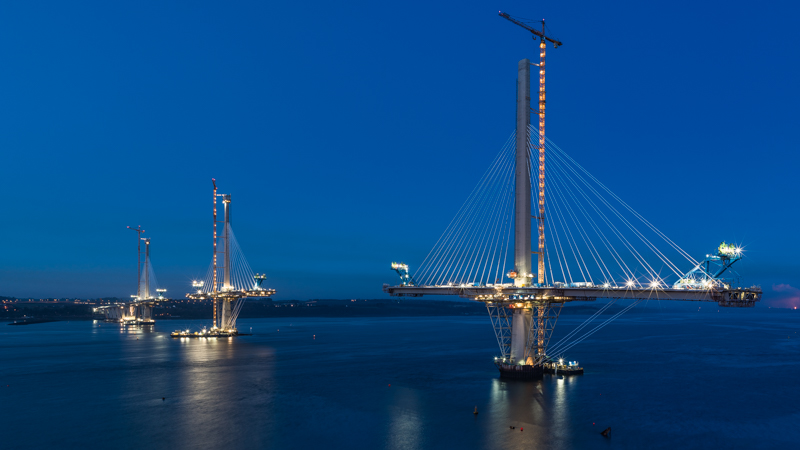
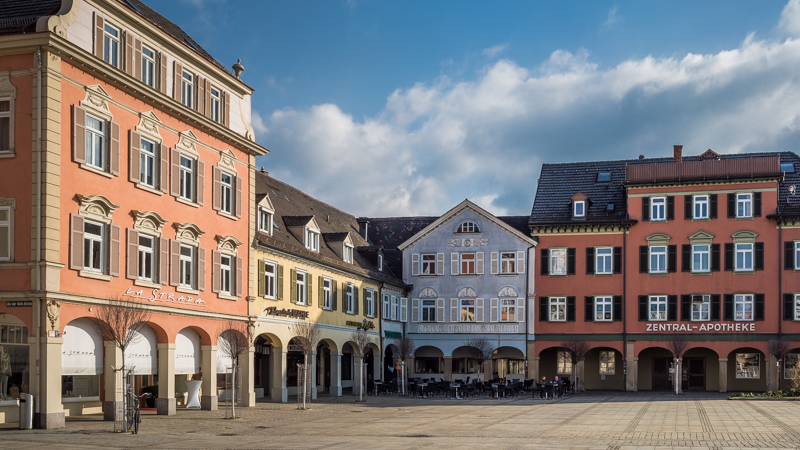
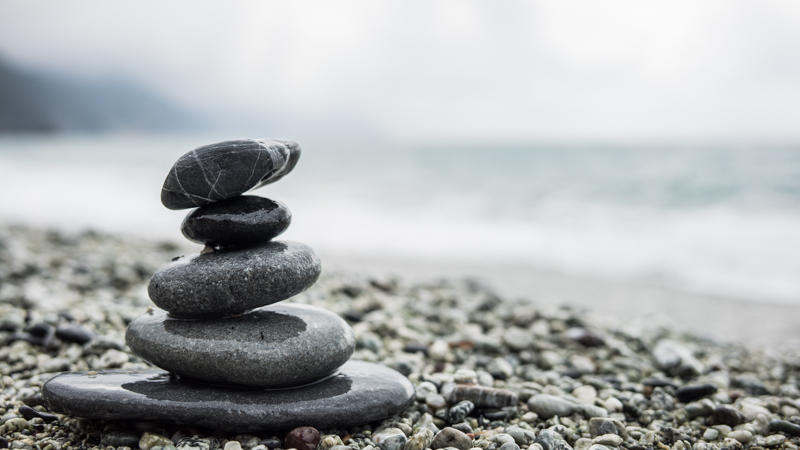
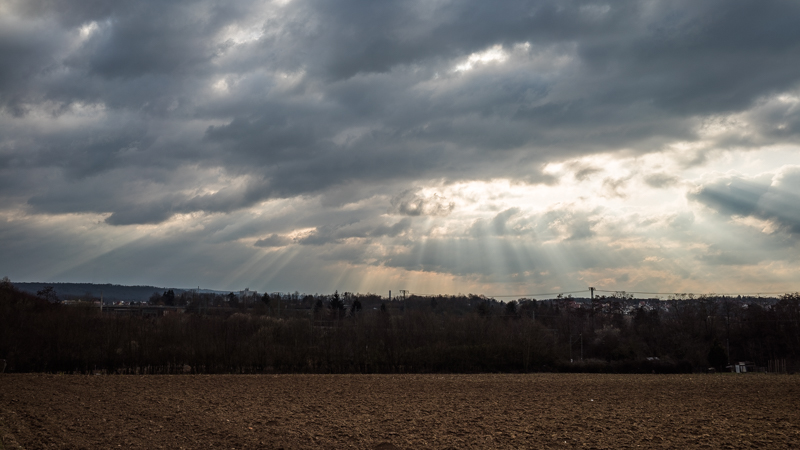
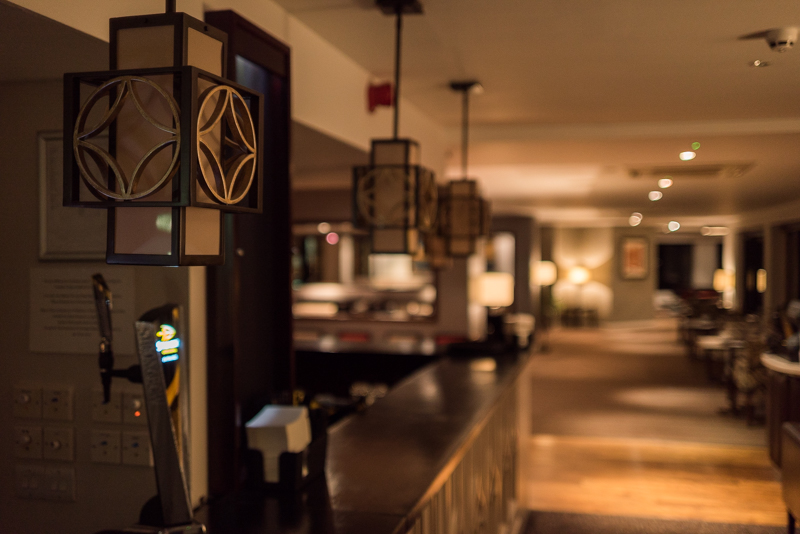
I have set up a flickr album which contains some shots taken with the Zeiss Loxia 35mm 2.0.
Support Us
Did you find this article useful or just liked reading it? Treat us to a coffee!
![]()
![]()
![]() via Paypal
via Paypal
This site contains affiliate links. If you make a purchase using any of the links marked as affiliate links, I may receive a small commission at no additional cost to you. This helps support the creation of future content.
Latest posts by BastianK (see all)
- The Best Fullframe Lenses from China - November 24, 2025
- Review: Mr. Ding Optics 50mm 1.2 Noxlux Z - November 23, 2025
- Analogue Adventures – Part 46: Fujichrome Provia 400F (expired) - November 19, 2025
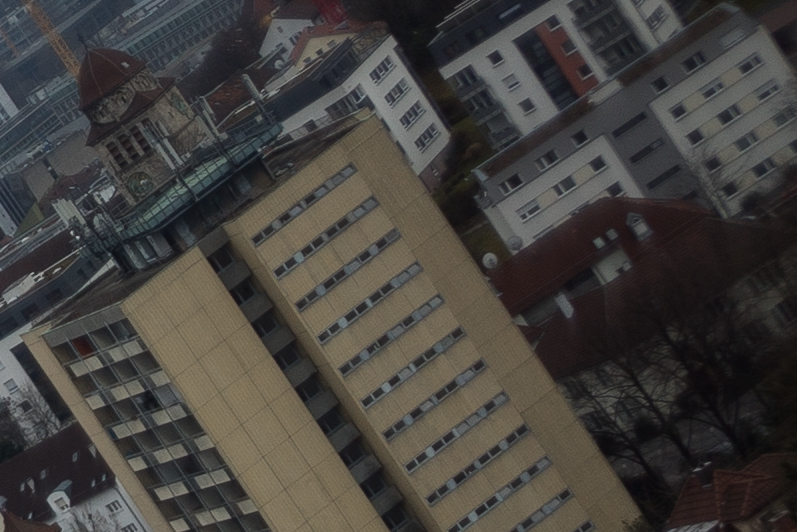

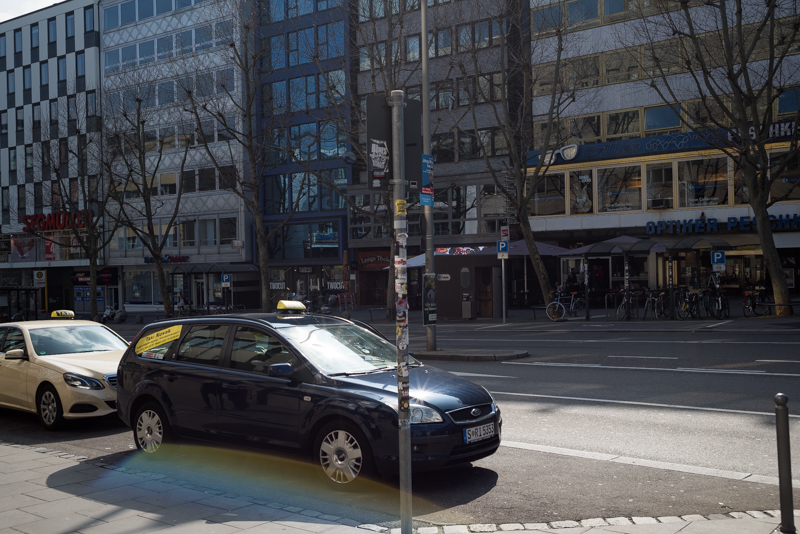
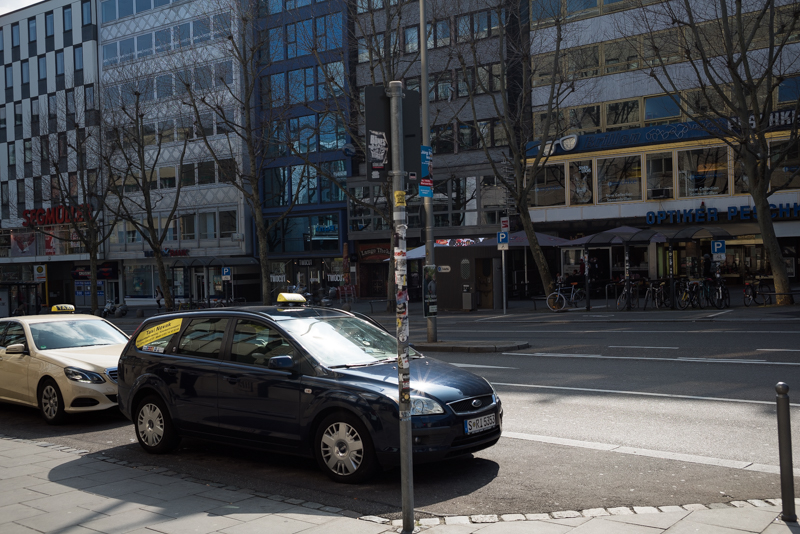




Wonderful review. Thank you so much for taking the time with it.
Dear Marc, thank you very much for your feedback!
I have the Loxia 35 and compared it in the past against a Sony Zeiss 35mm f2.8 during trips to Europe and Asia at the end of last year. I bought the Loxia 35 first and considered replacing it with a used 35mm f2.8 to free up some cash. Overall my experience with its performance is consistent with your review but I kept the Loxia 35 and sold off the 35mm f2.8. The coma issue is a real problem but manageable by stepping down to f2.8 for nightscapes. The edge performance issue I think is overblown by reviewers based on the photos I’ve taken and seen – it’s there but you really need to be pixel peeping to see it at f8 or f11. I also don’t know when I’m taking brightly light landscapes at f2 or f4 and focusing on the extreme corners so I think it’s an unrealistic and narrow test condition.
Where I do think the Loxia 35 distinguishes itself are that 1) the colors are punchier and more contrasty than the Sony Zeiss 35mm – like in your sample image #2, 2) whatever design flaws or intentional design considerations that’s in the lens, it does give it a far better 3d pop and subject separation than the 35mm f2.8 like in your sample pictures 3 and 4, 3) the lack of distortion does give it a different rendering from the 35mm f2.8 – it almost feels like using a 50mm lens but in a 35mm perspective, 4) the center sharpness is very high, which may contribute to point 2 that i made., and 5) excellent ergonomics
Some of the above considerations may or may not matter and some of it can be postprocessed out but I think the out of camera photos are noticeably more pleasant to me vs. the 35mm f2.8 although that is not a bad lens by any means. I shoot in raw but don’t really post process that much so for me, great out of the camera pictures is a strong positive. As for the price, I think its a better value at MSRP than the 35mm f2.8 for what you’re getting overall however at the current used prices, I think the 35mm f2.8 is a better value today. I wouldn’t buy a batis 35mm f2 to replace this since the form factor is noticeably bigger but I would sell it in an instant if they release the 35mm f1.4 distagon zm in a loxia format that fixes the smearing issues on that lens.
Just my 2 cents but overall thanks for putting this review together.
Dear Tony,
thanks for sharing your point of view on that lens!
I agree with many of your above mentioned points (especially contrast), but regarding coma and
corner resolution I must say there are (albeit rare) times when I am not using a tripod, like in the evening during a strawl through a city.
With the Nikon 20mm 1.8G or the Loxia 21mm 2.8 I can take a handheld shot at 2.8 and still get very good edge to edge sharpness and unobstrusive coma, with the Loxia 35 this is not the case.
If I had to choose between the 35mm 2.8 and the 35mm 2.0 I would probably also go for the Loxia, but I think the used price (which is around 700-800€ in Germany) is better at reflecting the value of this lens.
Regarding the 35mm 1.4 ZM: count me in 🙂
For me this is one of best 35mm lenses out there to date.
Bastian
Excellent observations.
thankyou.
Very good comment. Totally agree.
Appreciated the review, thanks. Also appreciate your photographs too. Impressed with the quality. I use the 35mm 2.8 with a Sony a7r, which I am happy with. It’s great Sony are now giving us so many choices. Photographs with this combination for comparison http://sannyassa.co.uk/9094-2/
Dear Geoff,
thanks for your feedback and sharing some of your photos taken with the 35mm 2.8!
I wish we had as many choices with other focal lenghts, too 🙂
Bastian
The Sony/Zeiss Distagon 1.4/35 ZA T* FE is heavy and big but it could be the best 35mm ever made! For that reason alone I think you should test it. The reviews out there are incredible.
Dear Thomas,
to be honest I don’t think there is the best 35mm ever made.
To talk just about one aspect I would clearly distinguish between the best 35mm for landscape use and the best for portraits.
With straight aperture blades you get wonderful sunstars (as is the case with the Loxia), which is great for cityscapes, but I would totally prefer rounded blades for any kind of portraiture work.
Which gets my to the point, why there are so many reviews out there I don’t like:
Many reviews are only about the technical aspects – which are of course important – but lack the connection to real photography.
I honestly can’t take reviews with only 5 shots from the reviewers living room – or even no shots at all – seriously.
But in case anyone kindly provides the Distageon 35mm 1.4 FE ZA for review I will gladly do it and maybe I will change my mind about that lens then 🙂
Bastian
I think Jannik has the FE 1.4/35 maybe you could persuade him to part with it briefly. Tell him his baby is getting bored with this lens being pointed at him!
Jannik didn’t keep it 😉
i do like your reviews mainly centered on the sony A7 cameras but sometimes i find them a little unprecise. for example the loxia 35 is a very good lens for astrophotography but you say it is not suggested for this purpose. i personally find it the best compromise between the so so FE 35 2.8 and the too big Zeiss 35 1.4.
I finally bought a second hand loxia for € 770 (the price as new is really too high..) and i really think it is an excellent lens (especially for night photography which i do a lot)
so many times adapted lens show so many defects that it is questionable if it worth the effort to buy an adapter,search for the lens on eBay..etc
yes,it all comes down to money,but after many many lens i have tried in 20 years of intense amateur photography i came to the conclusion that it is better to have fewer very good lenses than many decent ones.
Of course this is just my opinion.
Dear Nicola,
I dont know what you are doing in terms of astrophotography, but you can have a look at what I do: https://www.flickr.com/photos/bastian_k/albums/72157646585487931
I use my lenses mainly wide open to keep ISO and noise down, so what is important here is decent sharpness at wider apertures right into the corners and the absence of coma.
Unfortunately I can’t say either about the Loxia 35.
One could also buy a Sigma 35mm 1.4 Art including adapter for less, which really excels for astrophotography because of the absence of coma even at f1.4,
although this would never be my walkaround lens on an A7 series camera.
If you are using your lenses stopped, e.g. with a tracker, you may come to other conclusions, but you will also have to deal with blurred foregrounds and/or use blending or other techniques in photoshop, to deal with this.
Bastian
Dear Bastian,
thank you for the reply.
well yes we have a different approach to night photography. I try to stop down to at least f4 to get the best out of the lens but use f2 to focus (i find that f2.8 lens make the framing a little difficult at night with the A7-A7R). Samyang 35 1.4 is also very good for night photography ( not much different than Sigma’s 35 1.4 apart from the distortion, on the Samyang,which is in my opinion too high.But t’s much cheaper than the Sigma)
I’m not keen on heavy lenses on the A7 since the camera is so light that it looses sense with a heavy lens attached.
All this said the Loxia 35 is better than the FE35 2.8 and better than the Samyang 35 1.4 (much less distorted and much lighter).
Nicola
Great Review. Thanks!
You are welcome, thank you for your feedback!
Thank you for the great review Bastian! Your thoughts are very similar to mine. I’ve had the Loxia 35 for about 6 months now, and I 100% agree with you that the lens is not worth it at retail price. I prefer my FE 35/1.4 in almost all regards except for the obvious size/weight difference. What I’ve found about the Loxia 35 is that wide open, there are also significant spherical aberrations – something that has ruined many of my pictures unfortunately.
A small thing – your link to your Loxia Flickr gallery actually goes to your Leica 90mm gallery.
Dear John,
thank you for your feedback (I corrected the link to the flickr album, thanks for noticing! 🙂 ).
I totally agree on the spherical aberrations (they should also be the reason for the coma performance),
in daylight they didn’t cause me much trouble actually (although you can see traces of their impact in the lower left corner of the tree branch sample photo, as well as the corners of the black and white photo), but with point light sources in the frame (e.g. cityscapes at night), especially near the broders, this becomes quite the problem wide open and kept me from taking some shots (without a tripod).
Bastian
This is how you review a lens! Thank you for this very informative text. Great photo examples too.
Dear Ola,
thank you very much!
Bastian
Ludwigsburg, nice! I also like your review. Thank you!
Yes, two shots from Ludwigsburg 🙂
Thank you!
Really great reading and nice pictures. Thanks
Came across this review again for some reason and glad to see you came around on the Loxia 35!
Is this lens recommended for purely landscape photography purposes? Very interested in the small size and I am a fan of how the Loxia lenses render with nice microcontrast and sun stars.
I can definetly recommend this lens for landscape and architecture photography where you mostly stop down the lens.
Sunstars are great and so is microcontrast.
Thanks for the great review of the Loxia 35! Bought the lens because of this and I really like the manual focus with the Loxias, I now have the trio (21mm, 35mm and 50mm).
Jan
I guess Zeiss will be happy having sent me one then 🙂
I have the 21mm 2.8 and the 35mm 2.0 and am really curious what focal length will be next…
Hello Bastian – thank you for your helpful reviews! Have you used this (or other Loxia lenses) for infrared? I have an A7R converted to 850nm IR, and I wonder how this lens’ resolution compares in IR to Canon or Sony-Zeiss 16-35/4 at 35mm. In both of the latter, it’s a bit soft in IR, just as in normal use, but one never knows what results may occur in IR. For example, my Zeiss ZE 15/2.8 is no better than the two 16-35/4 zooms when used for IR! Thanks.
I am sorry, I have no experience with IR photography. You might want to check if there are any information on the ZM 35mm 2.0 Biogon, as the optical formula is quite similar and same may be the case for the IR performance.
Bastian
This comes years after the original post but I have been using the Loxia 35 as my IR lens of choice. No center hot area. But I am using it on a crop sensor Nex-7 (converted to IR 590nm). I also use the Loxia 21 on this camera but it shows a mild center hot spot.
I am torn between this lens and the Voigtlander 35mm f1.7 ultron VM.
I don’t think field curvature will be a problem for me, but what about sharpness and contrast? Is the zeiss much better?
Thank you.
Wide open the Voigtlander is quite a bit better in both aspects. At f/5.6 the Zeiss will probably be a little better.
Bastian: Just some thoughts – The boats along the near side of the pier, in particular nearer the center of the image, are very soft, as is the boat in the lower center, and what appear to be birds? Not so with the edges along the same plane. Judging by the water that appears to be receding at the left side lower center, I’m guessing a longer exposure and some movement in the water is causing this? Otherwise, I think the lens is performing quite well. I just purchased a Loxia 35 (used) and will likely move my Sony Zeiss 35 2.8, I’m sure. Also, I’m moving from my “adapted” Zeiss glass to native mounts for my A7R II, as most would concur results will improve with elimination of an adapter. Thanks for the review!
Hello Bastian,
Are you still shooting with this lens?
Thanks.
Dear Tom,
as it is now possible using PCX filters to significantly improve the image quality of rangefinder lenses (see this article) I am now using the Voigtlander VM 35mm 1.7 + 5m PCX Optosigma filter which is oh so slightly worse for Landscape/Architecture stopped down but better in terms of bokeh and wide open sharpness.
Well I’m sold then. That’s my concern was how good the voigtlander is. I have the 59 loxia so I’ll try the voig then. Thanks for the reply. Much appreciated.
50 loxia….:)
Yep…just bought it. And away we go!
Hi Bastian,
I already own a Sony Zeiss 55mm 1.8 and I am looking for a wider lens. Im between Sony 16-35 F4 and this Loxia 35mm F2. What would you recommend? My interest is on the sharpening, obviously Loxia has a better one but is the Sony too far from it? Thank you
For most usage scenarios the difference won’t be that huge.
Furthermore if you use it alongside the FE 55mm 1.8 you may want the 16-35 because of the similar color rendering.
Good evening Bastian
Just a question…….I’ve tried everywhere but no answers so far.
I don’t have auto focus magnification in movie mode with my A7S.
Am I missing something?
In all other modes it works flawlessly.
Thanks
I don’t do video, but I think it is possible auto magnification is not available in movie mode at all.
Thanks Bastian
Now it’s not available in ANY mode.
Weird
Hello,
I need advice. I have receive a copy of loxia 35 mm that have some electronics problems. Pitifully I had to send it back.
Anyway I have done some photographs. The color and contrast were good as usual in Zeiss. But resolution was poor. Uncomparably lower, even at first glance with Sony 85 and 55 f1,8. Is this normal or it is connectec with the copy I received?
Loxia 21mm, that I also have, have a poorer resolution that Sony lenses. On the other side, this is not so suprisingily given the focal distance… Are my impressions correct or I have to send my loxia 21 to recalibration, if such service exits and or is provided by Zeiss. It is brandnew…
In spite of the excellent resolution Sony lenses produce washout colors, and manofacturing is relatively poor, cheap feeling. It is correct also my impression?
Regards and thanks in advance for your help.
I did not compare the Loxia 35 to any of the Sony lenses, but stopped down to f/8 there should be barely anything left to desire.
From f/2 to f/4 it ain’t that great though.
If you compare the 21 Loxia to an 85 or 55mm lens it will always look worse comparing fine details.
Maybe you know of someone who has another sample of the 21mm Loxia and you can compare your lens to his/hers?
I share your impression on the Sony lenses otherwise.
Nice revieuw which does not really facilitate my choice. I am currently looking forward to a beautiful lens for street photography and thought of this Loxia 35mm f2. I have been able to ‘feel’ this lens once before and those first acquaintances have made quite an impression on me! Your opinion about this. Thanks Dirk
I don’t like the Loxia 35 bokeh at usual street photography distances and would prefer the Voigtlander 35mm 1.7 for that purpose, but what you prefer in terms of bokeh depends on your personal taste of course. Maybe you prefer the Loxia’s bokeh.
Congratulations for the images selected by Zeiss for the page dedicated to this lens.
Thank you very much 🙂
I have the Summicron-M 35mm ASPH and use it with the M10, shooting mainly events, people. I am considering getting the Sony A7 III as a second body. My question is: would the Summicron-M 35mm + adapter work OK with the A7 III or I should be better off getting the Loxia 2/35 for the Sony.
Thanks for your help.
This greatly depends on what you want to shoot with the lens.
Loxia has imho not the greatest bokeh rendering but excels stopped down for landscape and architecture.
The Leica will suffer from the thick filter glass of the Sony cameras, see this article for further information.
I came on this page by clicking on this link for the Loxia 2.4/85mm on the reviews page:
https://phillipreeve.net/blog/lenses/zeiss-cy-lenses/
Doesn’t seem right to me 🙂
Should work now
Hi Bastiank,
Thanks for the review and I recently bought a 35mm 2.8 from Ebay, and found this has become my favorite daily lens. The color rendering is amazing, and the sunstars are the most fun part. I am in photography in about 3 months and definitely I have a lot to learn and improve, but I already whoa my wife with this lens when I took some night photos (if you bother to check these out: https://www.flickr.com/photos/63369309@N06/with/33706319688/). Those are direct conversion from raw to jpeg with no post editing (except cropping for some). I also shoot some with Sony 16-35 F4, and like Phillip reviewed the sunstars are very blurred. I end up choosing many more photos with Loxia 35 and non with16-35 F4. I guess I will put that on ebay and think about buying a Loxia 21 or Batis 18. Thanks.
sorry I meant Loxia 35mm 2.0, not 2.8
I think you would be happier with the 21mm then 🙂
Did anyone have the chance to compare it to the Milvus 35mm f2?
I know it’s quite a bit bigger and not a native E lens but I wonder how they would compare with an adapter for the latter…
Dear BASTIANK
I’m Dale, and i come from Vietnam. I have just seen a good deal of the zeiss milvus 35mm f2.0. So, i would like to know that is there any differences between the milvus and the loxia? Additionally, the milvus one is for ef mount originally so i will use the mount converter for my Sony a7 mark 2. I am looking for your answer and thanks for your great job also.
Sincerely
Dale
Those are completely different lenses, so nothing written here applies to the Milvus 35mm 2.0.
So, can you give me any comment for this choice. I mean the milvus 35mmf2 + adapter + sony a7m2. I just use manual focus only? Is it ok for street photography and portrait ?
I have no personal experience with that Milvus 35mm 2.0, so I am a bit hesitant giving you big advices here.
From what I have seen bokeh is smoother compared to the Loxia, but the lens is really big by comparison.
If the size does not bother you it should work well for your applications.
But honestly if the size of the Milvus + adapter does not bother you: a Sigma 35mm 1.4 Art is not much bigger and even lighter, so I might prefer that one if I were you.
Actually i do have the sigma art one, but i really wanna have a zeiss 35. The fe 35 f2.8 is ok but i do not like the f2.8. I used to think about the loxia one but in VN, this one is pretty expensive, thus i did not buy it. Yesterday i see the milvus 35 f2 is on sale. Just 15 mil VND, about 700 usd. That is the reason why i think about it much. Honestly, the sigma art is good but i really love wonderful factors of Zeiss lens. In the other hand, i am not a fan of auto focus lens cause i tend to love controlling the sharpness so maybe that is the reason why i love most of manual lens. I will consider again, if this option work well i think that this will be a reasonable choice for non professional photographer or ones who do not have much money
If you have the Sigma Art I don’t think you need the Zeiss 2/35 unless you have tons of spare money and just want to experiment.
The Sigma can be used manually, is not much bigger or heavier that the Milvus plus adapter, and gives you thinner DOF to play with.
The Milvus 2/35 is just a rehousing of the classic 2/35. It is a good lens, very good for when it was designed, but while still optically competitive nothing special by current standards.
Firstly, i would like to give a big thanks for your great review. Could you give one more information? So, do u think that is this lense good for portrait photography outdoor. Cause i am going to buy this for shooting people.
I don’t really like the bokeh rendering of this 35mm Loxia, so I would say no, but that is a matter of taste and only you can decide for yourself if you like it (e.g. by looking at portraits other people took with this lens).
Recently added a Marumi Apochromat 5x to the Loxia 35 and have compared with my Voigtlander Apo Lanthar 65, Micro Nikkor 55 f3.5, Zeiss Batis 40 CF, and Minolta Maxxum 100mm f2.8 macro, all on an a7R3 and using apertures of f/11 – f/16. Of these the combination of the Loxia 2/35 with the Marumi and the V’lander 65 are the sharpest and are really equivalent. Which of these two I chose depends on how close I am able to get to my subject, usually a wildflower.
Carrying a 52mm Marumi Apochromat 5x magnifier adds versatility to the Loxia 35.
I want just to say “thank you” one more time for your solid reviews!
Your review and the long test by Viktor Pavlovic (http://www.verybiglobo.com/zeiss-loxia-biogon-352-review/) made me curious about the Loxia 35mm/2.0. Therefore I have bought a very good used copy at the beginning of 2019 for use with my A7R II. It took me some time to make the most out of it, especially to learn how to deal best with the field curvature. But now, after one and a half year of using it, I really love this little lens. Yes, it has quite some shortcomings, yes, I wish it was more like the Loxia 21/24/85 which are very good even at full aperture. But stopped down the Loxia 35 is great for landscape and architecture, the images are clear and crisp, and working with the lens is (most times ;)) a joy.
Therefore, thank you for your well-balanced review which (as I can say today from my own experience) perfectly describes both the strengths and the shortcomings of this lens.
Thanks for sharing your experiences Roman!
Thank you! Well, my experiences just confirm the findings in your review. Best, Roman
Hi Bastian,
Thanks for your thorough review and all the nuanced thoughts about this lens. I’m looking for a 35mm with low distortion to use on a copy stand to shoot flat artwork at a distance of 30 – 50 inches. Do you have any idea of the field curvature of the loxia 35 is worse at this type of close distance than at further distances?
Are you really sure a 35mm lens is the right tool for the job?
I don’t think so because towards the borders perspective Distortion will be introduced.
Personally I would not go below 60mm for any copy task.
Nevertheless, there is still no really good 35mm macro lens and I did not check the close distance field curvature patterns on any that I reviewed.
Thanks, Yes I know, I’m mainly going to be using the sony 50mm macro 2.8 FE, but some of pieces are larger and I won’t be able to raise the camera high enough on the copy stand. (even tho it’s the highest available) I think if I’m very careful with alignment and choose a 35mm lens with low distortion, that it might work for these few and be better then having to move all the lights and creating a whole new shooting setup. But point taken… only way to know is rent and test for myself I guess. I also have the Batis 40, but when I did tests at this distance I found it to have wavy distortion near the edges that I could not fix in LR
Hi Bastian. Thank you for this review.
I just bought the Loxia 35mm two weeks ago in addition to my Batis 25mm and 85mm lenses.
I can say I am really happy with the Loxia! I think the sharpness is better than the Sony 35mm 2,8 but, yes, curved. Build quality and manual focus are great, of course.
I do not need edge to sharpness but I like the clearness and contrast and colors that seperate the subject from the backgroung even between f/2,8 and f/5,6.
The image looks beautifull and sculptured. Must be what they call the Zeiss 3d pop! But I do not own a lot of modern lenses to campare it to.
Anyway, I sold the Sony 35mm 2,8 but will keep my Carl Zeiss Jena and Minolta 35mm lenses for their vintage looks.
It is very likely that I will buy the Loxia 21mm next as soon as I can afford it.
Used prices of the Loxia 21mm 2.8 are very reasonable these days, you will not regret it 🙂
Just to add my 2 pfennigs.
This is a lens I have loved in ZM mount (both f2 &2.8 versions) so it was welcome news when the Sony mirrorless version came along.
Good 3d pop without being hard, and I actually like busy backgrounds providing the contrast fall off happens quickly which it does on this lens.
I tend to always use the lens on it’s own and leave the lens hood in the box. Whereby half of the lens barrel is the focusing ring – great design and certainly a slow burner in terms of aesthetics.
I wasn’t 100% convinced by the Loxia line at first but in use they make sense – aperture is least adjusted so stays out of the way at the back. Focusing is absolutely smooth as silk and as a bonus it is a delightful near macro lens on the a6400.
Inspired by this article, I just bought a 2nd hand Loxia 35mm Biogon. Unfortunately without the original lens shade, but with a Matte box. Can someone measure the length of the shade for me?
As a first step i would like to try it with a 3rd party lens shade.